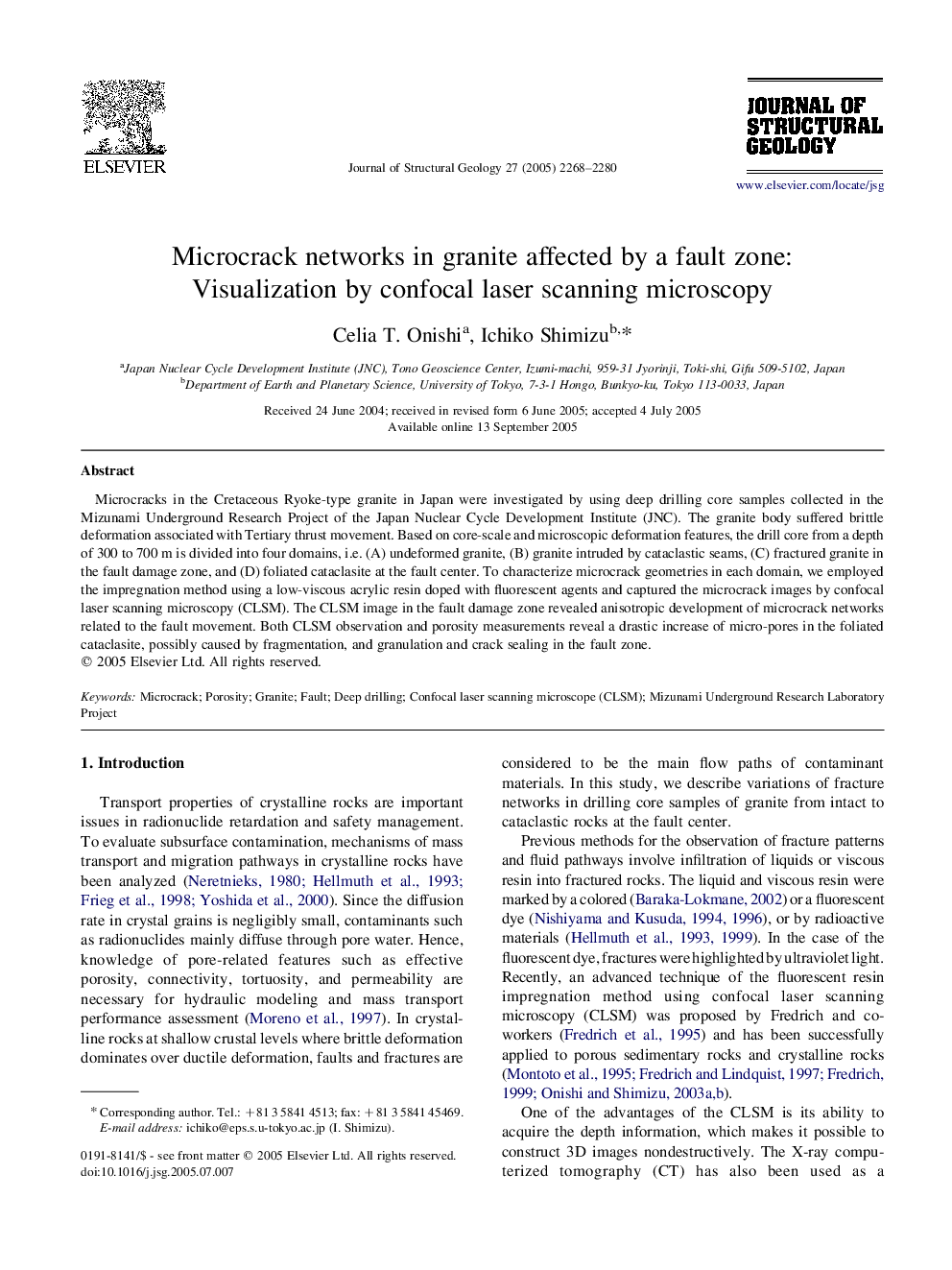| Article ID | Journal | Published Year | Pages | File Type |
|---|---|---|---|---|
| 4734320 | Journal of Structural Geology | 2005 | 13 Pages |
Microcracks in the Cretaceous Ryoke-type granite in Japan were investigated by using deep drilling core samples collected in the Mizunami Underground Research Project of the Japan Nuclear Cycle Development Institute (JNC). The granite body suffered brittle deformation associated with Tertiary thrust movement. Based on core-scale and microscopic deformation features, the drill core from a depth of 300 to 700 m is divided into four domains, i.e. (A) undeformed granite, (B) granite intruded by cataclastic seams, (C) fractured granite in the fault damage zone, and (D) foliated cataclasite at the fault center. To characterize microcrack geometries in each domain, we employed the impregnation method using a low-viscous acrylic resin doped with fluorescent agents and captured the microcrack images by confocal laser scanning microscopy (CLSM). The CLSM image in the fault damage zone revealed anisotropic development of microcrack networks related to the fault movement. Both CLSM observation and porosity measurements reveal a drastic increase of micro-pores in the foliated cataclasite, possibly caused by fragmentation, and granulation and crack sealing in the fault zone.
